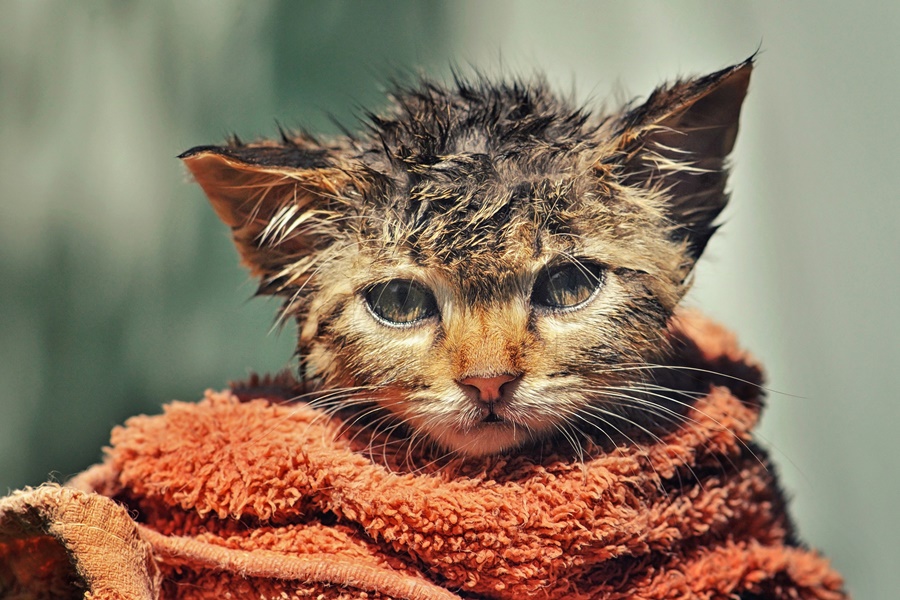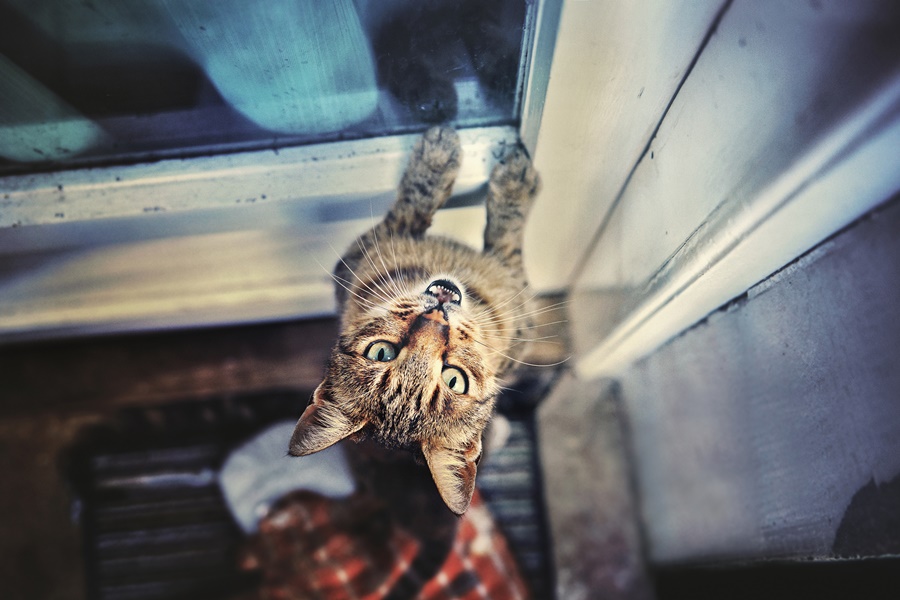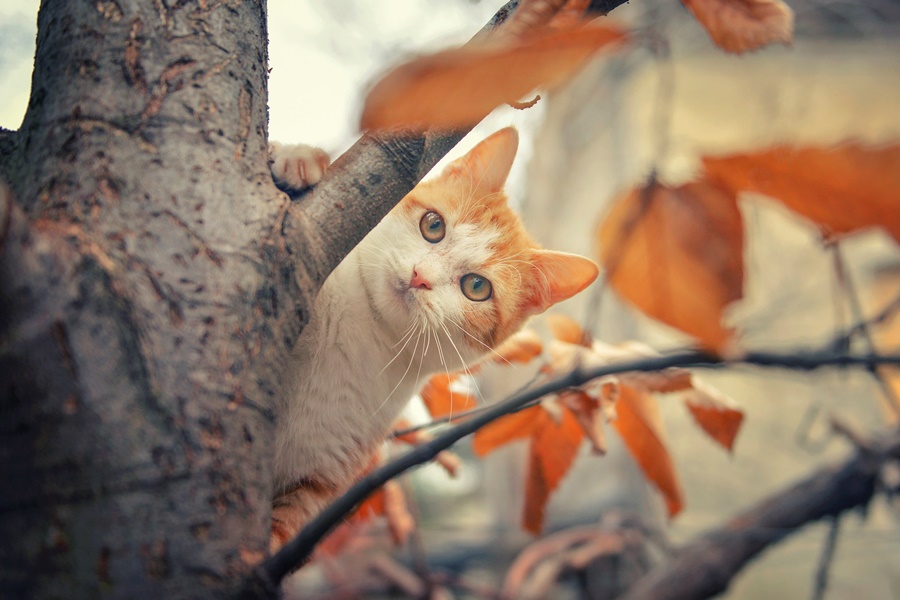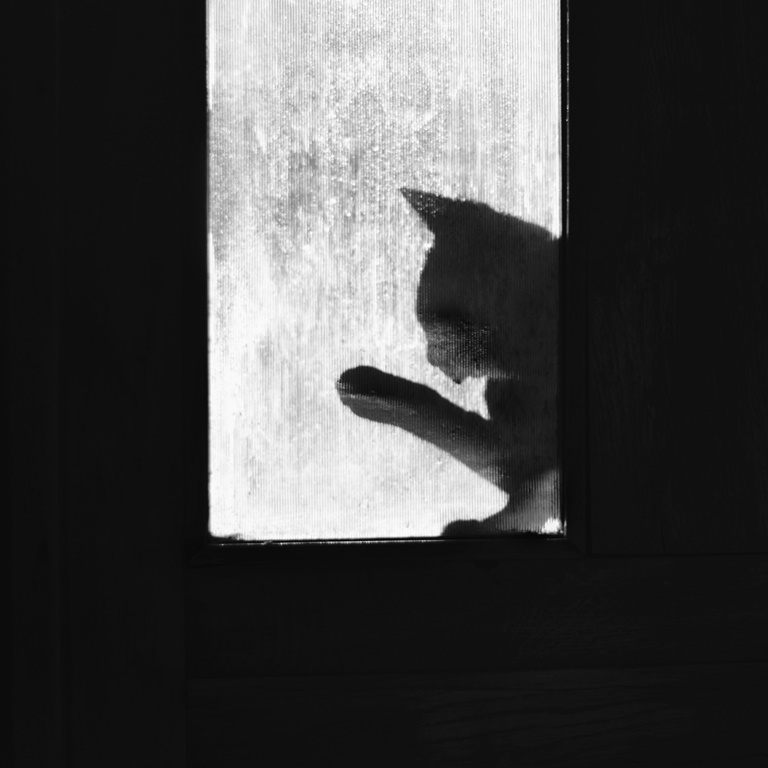Fancy capturing some feline photos? Professional photographer Zoran Milutinovic offers his tips for perfect cat portraiture

All images by Zoran Milutinovic
When we talk about cat photography, people usually think of random captures of pets posing for camera and looking cute, with no artistic value. Images that are only good for stock photos.
However, there is a different approach if you truly respect your subject. Cat photography can be very challenging and rewarding if you decide to do something more than just a cute shot.
I find cats very interesting to photograph because they are all unique individuals. They all react differently to situations and events. They can be hyperactive, are always on the move and can be seen doing crazy stuff all the time. I always try to catch the funny and unique moments in my photos, trying to show to the audience that almost every cat has different personality. Shoot at the right time, in the right place, and you can tell stories with unforgettable images.
Working with your subjects
Expensive gear and perfect camera settings won't help you capture a cat’s best moments if you don’t follow a few simple rules…
When you’re photographing cats, remember to treat them as friends. Be patient and respectful with your subject, and never force a cat to do something it clearly doesn’t want to do.
The chance of any cat doing what you’d like it to do is about 50-50, so don’t worry if you don’t have any success on your first try. This is part of the charm of photographing cats – you have to work hard and be patient.
You must be ready to slip into strange places, roll in the grass or the dirt, climb trees and more. Remember: if a cat does not want to follow you, do not try to force them. Nothing good will result. Just wait until they are ready to co-operate.
If you are planning to take pictures of cats running and jumping, do not feed them beforehand. No one wants to jump and run on a full stomach!

Get their attention by playing to their curiosity. Cats all react differently to situations, but one thing they have in common is their natural curiosity. Use it; get their attention by crackling your fingers, rustling dry leaves (or paper if you’re indoors) or tossing pebbles.
When you’re actually taking the photo, remember to keep the eyes sharp. Eyes tend to be the first thing we look at in a picture, so use the viewfinder to make sure you’re focusing on the eyes every time.
Choosing a location and working with natural light
It may sound funny, but when I start shooting I always have images in my head of how I would like my photos to end up, so I always try to realise it.
I like to use natural environments, as they are places cats feel comfortable, and I also think about high ground. Cats have a predator’s instinct; they love to be on higher ground, observing everything that moves. So what better place to combine these two conditions than up in a tree? That is by far my favourite location, allowing me to show off cats in a way that recalls their wilder cousins, as skilled climbers and hunters.

Green environments (lawns, bushes and flowers) are great for getting a low point of view. Show what life looks like from a cat’s angle and perspective. The lower you get, the better you can capture cat in a position of a real hunter, putting yourself in the place of their prey.
Use the surroundings to make a frame around the cat, as this will add more depth to your photo. Nice bokeh in the background works well. Also, creating a contrast between the cat’s fur and the background can lead to pleasing results.
Natural light is a gift. The best time for perfect light is when the sun is low, giving you warm, soft light without shadows on the cat’s face and fur. Flash can be distracting and frightening for animals – if you absolutely have to use it, take it off your camera or angle it upwards. A softbox is a good idea if you have one, as this will give you a pleasant soft light.
Choosing camera settings
When it comes to camera settings, the most important is shutter speed. The higher you get it, the better chance you‘ll have of capturing a cat with perfect sharpness.
Since cats are always in a hurry, and when you’re outside the light can quickly change, it’s best to use shutter speeds of at least 1/1000sec. You don’t want blur ruining your work. Don’t be afraid to push your ISO higher than 800, especially in low light – it’s better to have a little bit of grain in a photo than no photo at all. The priority is freezing the moment, and besides, sometimes grain can add a nice bit of texture.
Always go with a plan for what you want to capture, but make your peace with the fact that you will not always succeed. Cats sometimes will not co-operate; that’s just their nature.
If you’re photographing static postures, manual mode is recommended. If you’re going for action photos – with a cat running, jumping, etc. – there’s no shame in putting the device on auto. No matter how fast you are with your settings, the cat will always be one step ahead of you, and the perfect frame can be lost while you’re fiddling with dials or buttons.
Other important settings if you want to photograph running and jumping cats are: 3D focus tracking, continuous shooting mode, and shutter speeds of 1/1000sec or higher, with f/5.6 as the ideal aperture.
If a cat feels comfortable near you and allows you to come closer, 35mm f/1.8 and 50mm f/1.8 lenses can be very useful. The f/1.8 aperture will give you beautiful bokeh background.
Editing your images
I’m not a fan of heavy editing. Most of the time I use filters on my lenses to create soft and colourful photos in-camera; polarising filters are my favourite. I do always put my images through software for minor improvements – if you want a perfect photo, there is always something to fix.
My favourite software for editing is Adobe Photoshop CC along with Nik Software Color Efex Pro filters, which I find extremely useful. Working with layers is something that makes the process much easier – most of the editing that I do involves erasing uninvited guests and distracting objects from the image. Removing shadows from the cat’s eyes is also a priority; for me the cat’s facial expression is the most important detail in the image, meaning the eyes must be sharp and bright.
Always take photos in RAW format – they’re much easier to enhance and adjust using Camera Raw software, and you’ll get maximum quality at the end.
Some images look much better in black and white. I’m a big fan of B&W, and I’ll generally use a little more editing than usual to make them, adding some grain to give the photo a different look and feel.

A note on black cats
For most people, black cats are the biggest challenge. They are hard to photograph – you need to pay extra-close attention to the lighting, background, framing and angle. Perfect light is essential – you want the light behind you or to the side of the black cat. A bright cloudy day or when the sun is low can be ideal for photographing, and then you’ll have that warm, soft light, without shadows on a cat’s face and fur.
When you’re photographing a black cat, you have to photograph just that black cat; your pet should fill the frame. Also clean and simple background is recommended for better contrast.
A problem with black cats can be bald spots – the places where fur is sparse. The white skin contrasts a lot with the black fur, and you’ll need to find the right shooting angle to avoid this problem.
Good luck with your cat photography!
About the Photographer
Zoran Milutinovic is a professional photographer from Serbia, specialising in cats. See more of his images on 500px and Facebook.

